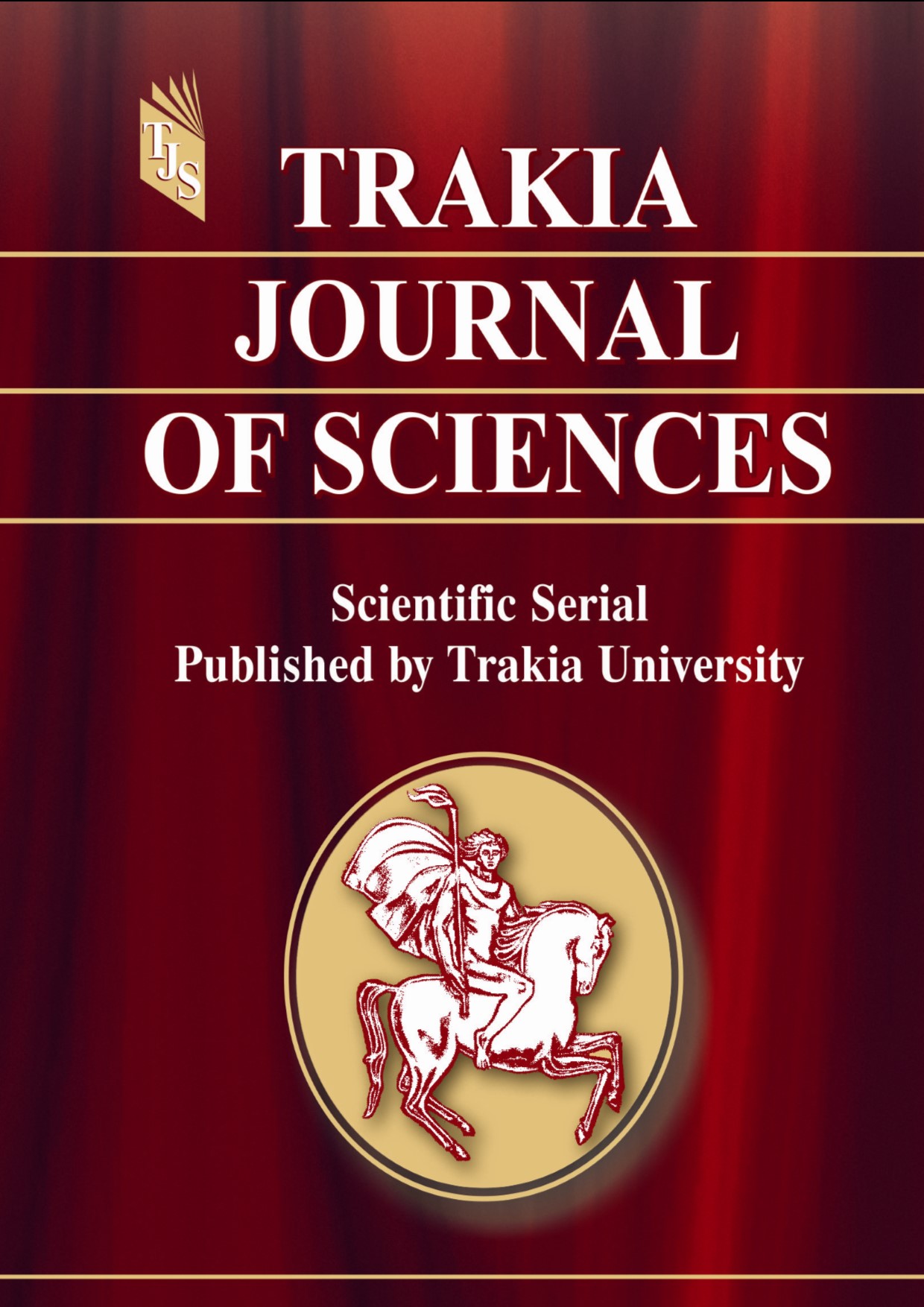POTENTIAL STRATEGIES AND APPROACHES FOR ENHANCING THE BIOAVAILABILITY OF NATURAL ALKALOIDS IN GLAUCOMA TREATMENT
DOI:
https://doi.org/10.15547/tjs.2025.03.005Keywords:
pilocarpine, molecular docking, optometric practice, multitarget therapyAbstract
INTRODUCTION: Glaucoma is one of the leading causes of irreversible blindness worldwide, with effective management relying on early detection and reduction of intraocular pressure (IOP). Despite therapeutic advances, there is a lack of natural-origin bioproducts with proven safety profiles on the market. Alkaloids, as naturally occurring molecules with low toxicity, represent a potential avenue for enhancing glaucoma treatment options.
AIM: To evaluate the efficacy and selectivity of the natural alkaloid pilocarpine through molecular docking analysis against major ocular targets, with the aim of exploring opportunities for the development of new bioproducts.
METHODS: Molecular docking of pilocarpine was performed against the muscarinic M₃ receptor, acetylcholinesterase (AChE), carbonic anhydrase II (CAII), prostaglandin D synthase (PTGDS), and the ABCG2 transporter. A protein-protein interaction network analysis using STRING was also conducted to assess functional relationships.
RESULTS: The analysis revealed a strong affinity of pilocarpine for the M₃ receptor and no significant interactions with other targets, emphasizing its specificity and potential for safe application. Network data highlighted the multisystem nature of glaucoma and the need for multitarget therapeutic strategies.
CONCLUSION: The findings underscore the potential of natural alkaloids in glaucoma therapy and the importance of a multidisciplinary approach. Given the high social burden of the disease, strategic involvement of optometrists in primary screening and prevention efforts is critical for early detection and effective risk management of blindness.
References
Danesh-Meyer HV, Levin LA. Glaucoma as a Neurodegenerative Disease. Journal of Neuro-Ophthalmology. Sep;35:S22, 2015.
Gupta N, Grover S, Wadhwani M, Shaikh N. Epidemiological Principles Applied to Eye Diseases: Blindness and Visual Impairment. In: Textbook of Community Ophthalmology. CRC Press; 2023.
Bourne RRA, Taylor HR, Flaxman SR, Keeffe J, Leasher J, Naidoo K, et al. Number of People Blind or Visually Impaired by Glaucoma Worldwide and in World Regions 1990 – 2010: A Meta-Analysis. PLOS ONE. Oct 20;11(10):e0162229, 2016.
Lee SSY, Mackey DA. Glaucoma – risk factors and current challenges in the diagnosis of a leading cause of visual impairment. Maturitas. Sep 1;163:15–22, 2022.
Musa I, Bansal S, Kaleem MA. Barriers to Care in the Treatment of Glaucoma: Socioeconomic Elements That Impact the Diagnosis, Treatment, and Outcomes in Glaucoma Patients. Curr Ophthalmol Rep. Sep 1;10(3):85–90, 2022.
Andole S, and Senthil S. Ocular Surface Disease and Anti-Glaucoma Medications: Various features, Diagnosis, and Management Guidelines. Seminars in Ophthalmology. Feb 17;38(2):158–662023.
Pronin AN, Wang Q, Slepak VZ. Teaching an Old Drug New Tricks: Agonism, Antagonism, and Biased Signaling of Pilocarpine through M3 Muscarinic Acetylcholine Receptor. Mol Pharmacol. Nov;92(5):601–12, 2017.
Biali ME, Auvity S, Cisternino S, Smirnova M, Hacker M, Zeitlinger M, et al. Dissimilar Effect of P-Glycoprotein and Breast Cancer Resistance Protein Inhibition on the Distribution of Erlotinib to the Retina and Brain in Humans and Mice. Mol Pharmaceutics. Nov 6;20(11):5877–872023.
Arslan OE. Pathophysiology of Vision. In: Pathak Y, Sutariya V, Hirani AA, editors. Nano-Biomaterials For Ophthalmic Drug Delivery [Internet]. Cham: Springer International Publishing; [cited 2025 Apr 25]. p. 57–81, 2016. Available from: https://doi.org/10.1007/978-3-319-29346-2_4
Kaur G, Singh NK. Inflammation and retinal degenerative diseases. Neural Regeneration Research. Mar;18(3):513, 2023.
Conway MP, Forristal MT, Treacy MP, Duignan ES. Investigating the Role of Optometrists in Teleophthalmology and the Implications of Increasing Access to Advanced Imaging Techniques and Digital Referral: A Systematic Search and Review. Telemedicine and e-Health. Sep;27(9):974–81, 2021.
Birdsall NJM, Bradley S, Brown DA, Buckley NJ, Challiss RAJ, Christopoulos A, et al. Acetylcholine receptors (muscarinic) in GtoPdb v.2021.3. IUPHAR/BPS Guide to Pharmacology CITE [Internet]. 2021 Sep 2 [cited 2025 Apr 25];2021(3). Available from: https://journals.ed.ac.uk/gtopdb-cite/article/view/6381
Zhu C, Lin R, Liu C, Huang M, Lin F, Zhang G, et al. The Antagonism of 5-HT6 Receptor Attenuates Current-Induced Spikes and Improves Long-Term Potentiation via the Regulation of M-Currents in a Pilocarpine-Induced Epilepsy Model. Front Pharmacol [Internet]. Apr 28 [cited 2025 Apr 25];11, 2020. Available from: https://www.frontiersin.orghttps://www.frontiersin.org/journals/pharmacology/articles/10.3389/fphar.2020.00475/full
Goncharov NV, Belinskaia DA, Avdonin PV. Organophospate-Induced Pathology: Mechanisms of Development, Principles of Therapy and Features of Experimental Studies. J Evol Biochem Phys. Sep 1;59(5):1756–96, 2023.
Pircher A, Neutzner ,Albert, Montali ,Margherita, Huber ,Andreas, Scholl, Hendrik P N, Berberat, Jatta, et al. Lipocalin-type Prostaglandin D Synthase Concentration Gradients in the Cerebrospinal Fluid in Normal-tension Glaucoma Patients with Optic Nerve Sheath Compartmentation. Eye and Brain. Apr 14;13:89–972021.
Gote V, Ansong ,Michael, and Pal D. Prodrugs and nanomicelles to overcome ocular barriers for drug penetration. Expert Opinion on Drug Metabolism & Toxicology. Oct 2;16(10):885–906, 2020.
Dwomoh L, Tejeda GS, Tobin AB. Targeting the M1 muscarinic acetylcholine receptor in Alzheimer’s disease. Neuronal Signaling. Apr 21;6(1)2022:NS20210004.
Killer HE, Pircher A. What is the optimal glaucoma treatment: reducing aqueous humour production or facilitating its outflow? Eye. Oct;34(10):1719–21, 2020.
Belin MW, Kundu G, Shetty N, Gupta K, Mullick R, Thakur P. ABCD: A new classification for keratoconus. Indian Journal of Ophthalmology. Dec;68(12):2831, 2020.
Ramsay E, Montaser AB, Niitsu K, Urtti A, Auriola S, Huttunen KM, et al. Transporter Protein Expression of Corneal Epithelium in Rabbit and Porcine: Evaluation of Models for Ocular Drug Transport Study. Mol Pharmaceutics. Jul 1;21(7):3204–172024.
Fraser HC. Hallmarks of aging predict age-related disease multimorbidities in patients [Internet] [Doctoral]. Doctoral thesis, UCL (University College London). UCL (University College London); [cited 2025 Apr 25]. p. 1–1962022. Available from: https://discovery.ucl.ac.uk/id/eprint/10146945/
Montejo-López W, Sampieri-Cabrera R, Inés Nicolás-Vázquez M, Manuel Aceves-Hernández J, Said Razo-Hernández R. Analysing the effect caused by increasing the molecular volume in M1-AChR receptor agonists and antagonists: a structural and computational study. RSC Advances. 14(13):8615–40,2024.
Ouhaddi Y, Najar M, Paré F, Lussier B, Urade Y, Benderdour M, et al. L-PGDS deficiency accelerated the development of naturally occurring age-related osteoarthritis. Aging (Albany NY). Dec 23;12(24):24778–97, 2020.
K. Schuster A, Erb C, M. Hoffmann E, Dietlein T, Pfeiffer N. The Diagnosis and Treatment of Glaucoma. Dtsch Arztebl Int. Mar;117(13):225–342020.
Ly A, Wong E, Huang J, Yapp M, Masselos K, Hennessy M, et al. Glaucoma Community Care: Does Ongoing Shared Care Work? Int J Integr Care. 20(3):5.

Downloads
Published
Issue
Section
License

This work is licensed under a Creative Commons Attribution-NonCommercial 4.0 International License.


